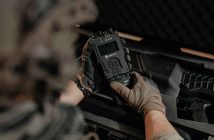
In a move to bolster Australia’s defence readiness amid the growing global drone threat, the Australian Federal Government has awarded a $45.9 million contract to Leidos Australia. The contract will see the multinational firm act as the official Systems Integration Partner for Project LAND 156, with responsibilities to deliver and continually evolve the Counter Small Unmanned Aircraft System (C-sUAS) capability for the Australian Defence Force (ADF).
Project LAND 156, launched just six months prior, embodies the Government’s continuous modernisation model for counter-drone capabilities. Already, the initiative has facilitated the rapid deployment of over 120 world-class threat detectors and drone-defeating systems to meet evolving ADF needs.
Deputy Prime Minister and Minister for Defence Richard Marles emphasised the significance of the program, stating:
“The Albanese Government is ramping up investment in counter-drone capabilities to ensure the ADF can detect, track and defeat hostile drones. Drones are one of the fastest emerging threats on the modern battlefield, and the ADF must be equipped to deal with them.”
This latest commitment takes the total investment in counter-drone capabilities under the project to $1.3 billion over 10 years, ensuring that Australia remains at the forefront of drone defence.
Minister for Defence Industry Pat Conroy highlighted the importance of building sovereign capability:
“This is about building an Australian capability to counter drones, not just buying equipment off the shelf. Through LAND 156 we are investing in Australian companies, Australian workers and Australian innovation to protect our personnel and assets.”
The dramatic rise in drone use by non-state actors and military powers alike—demonstrated vividly in the Russia–Ukraine conflict—has underscored the urgent need for rapid, flexible counter-drone solutions. The project also strengthens Australian defence sovereignty, leveraging domestic expertise and innovation. Local companies such as DroneShield, Sypaq Systems, AMSL Aero, Grabba Technologies, and Boresight remain central to development and integration efforts. Earlier phases of LAND 156 have seen the rollout of technologies using high-energy lasers, RF jamming systems, and kinetic effectors, including equipment like DroneShield’s “Drone Gun MK IV”.
Leidos Australia will now spearhead the integration of existing and emerging counter-drone capabilities across the ADF, ensuring seamless operability and continuous upgrades as threats evolve. This builds upon earlier showings of adaptability and innovation, including a $16.9 million tranche awarded under LAND 156 to 11 vendors for rapid capability delivery, among them DroneShield. Broader plans are also underway under a $10 billion drone investment—including at least $4.3 billion directed toward uncrewed aerial systems development over the next decade.
With the appointment of Leidos Australia to lead systems integration under Project LAND 156, the Government is endeavouring to stay ahead in drone warfare through a combination of strategic spending, industry collaboration, and ongoing capability refresh.






